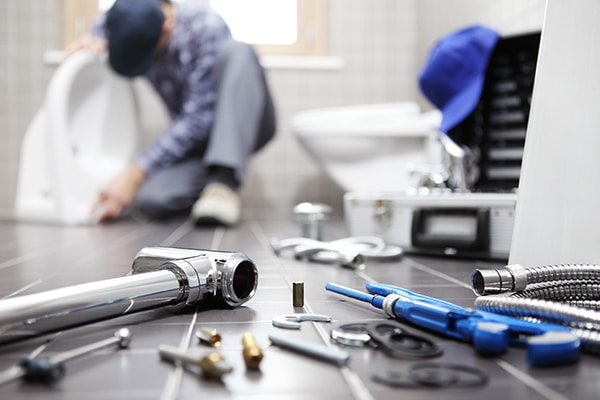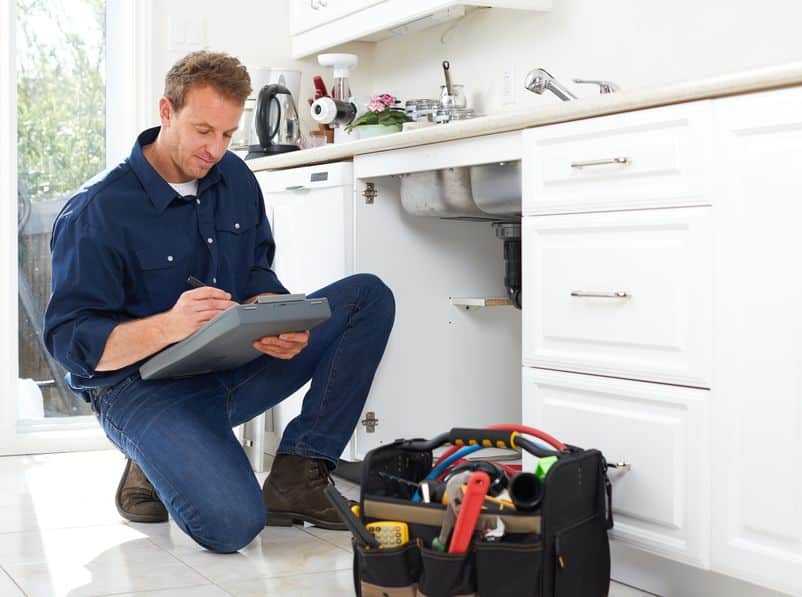Are you hunting for details about The Future Of Plumbing: Trends And Technologies To Watch?

Intro
The pipes industry is undertaking a transformative phase driven by technical innovations and growing concerns for sustainability and effectiveness. This post checks out arising patterns and advancements shaping the future of plumbing.
Smart Plumbing Solutions
Incorporating smart technology right into plumbing systems makes it possible for remote monitoring, leak discovery, and automated upkeep. Smart sensors and IoT (Web of Points) gadgets permit home owners and plumbings to keep an eye on water usage and identify problems in real-time, causing much more efficient source management and proactive upkeep.
Water Efficiency Solutions
With boosting emphasis on water conservation, cutting-edge remedies are being established to minimize water wastefulness in plumbing systems. High-efficiency fixtures, greywater recycling systems, and smart irrigation controllers are amongst the technologies helping consumers lower their water footprint while maintaining convenience and ease.
Lasting Products
The change towards sustainability encompasses plumbing products, with an expanding preference for environment-friendly options. Eco-friendly piping materials, such as PEX (cross-linked polyethylene) and HDPE (high-density polyethylene), deal toughness and resistance to deterioration without endangering environmental stability.
Predictive Maintenance
Anticipating maintenance strategies take advantage of information analytics and machine learning formulas to anticipate and stop plumbing issues before they occur. By evaluating historic data and efficiency metrics, anticipating upkeep algorithms can identify patterns and abnormalities, making it possible for aggressive treatments to stay clear of expensive repairs and disruptions.
Augmented Reality in Pipes
Increased Fact (AR) technology is revolutionizing plumbing by supplying specialists with real-time visual guidance for repairing and repair tasks. AR-enabled wise glasses or mobile applications overlay electronic information onto the physical setting, helping plumbings visualize pipe formats, determine concealed leaks, and execute fixings with precision.
Effect of 3D Printing
The development of 3D printing has actually introduced brand-new opportunities in producing pipes components. From custom-designed fixtures to intricate pipe fittings, 3D printing enables fast prototyping and on-demand production, lowering preparations and allowing higher personalization in plumbing style.
Health and Safety Qualities
In feedback to enhanced problems for health and safety, pipes fixtures are integrating features such as antimicrobial surface areas, touchless procedure, and self-cleaning mechanisms. These advancements not just boost hygiene but likewise advertise individual comfort and benefit.
Hygiene-focused Components
Touchless faucets, self-sanitizing toilets, and antimicrobial surfaces are coming to be progressively widespread in domestic and industrial settings, minimizing the threat of germ transmission and advertising a cleaner, healthier atmosphere.
Water Top Quality Surveillance
Developments in water high quality monitoring modern technologies allow homeowners to keep an eye on the pureness and safety of their water system in real-time. Smart water quality sensing units can spot contaminants, pH levels, and temperature variants, encouraging individuals to take positive procedures to make sure water security.
Remote Pipes Providers
Remote diagnostics and virtual aid are transforming the means plumbing solutions are delivered. With video clip conferencing and remote access modern technologies, plumbings can fix issues, give advice for do it yourself fixings, and also do remote inspections, providing better access and comfort to house owners.
Difficulties and Opportunities
While pipes innovations hold enormous pledge, they additionally existing obstacles such as information privacy issues, governing conformity, and the need for workforce training. Addressing these obstacles requires collaboration between market stakeholders and regulative bodies to ensure risk-free and responsible implementation of new innovations.
Regulatory Landscape
Governing frameworks play an essential role in shaping the fostering of pipes advancements, with requirements and codes governing every little thing from water effectiveness to item safety. As innovations remain to evolve, regulative bodies have to adjust to ensure consumer protection and ecological stewardship.
Future Expectation
The future of pipes is defined by continued advancement and combination with various other fields such as IoT, renewable resource, and structure automation. By accepting sustainable practices, leveraging emerging innovations, and focusing on user-centric style, the pipes sector is positioned to address the progressing requirements of culture while lessening its ecological impact.
Verdict
Finally, the future of plumbing is specified by a convergence of innovation, sustainability, and user-centric style. By embracing wise options, sustainable products, and proactive maintenance methods, the pipes sector can enhance efficiency, promote safety and security, and contribute to a much more sustainable future.
Plumbing Industry Trends You Need To Know
Smart technology in plumbing
Homeowners want to be able to manage their homes from their phones. The technology exists to make that happen. From smart toilets to leak detector devices, the whole plumbing system can be managed on an interconnected network made up of sensors, IoT devices, and machine learning algorithms.
This allows for wireless control to turn appliances on and off, automate routines, and access advanced monitoring to track water usage and flag potential issues. Smart technology streamlines water consumption, maintenance and energy usage, creating a more efficient system.
Green plumbing
The data analysis possible with smart technology not only improves convenience and cost-effectiveness but also fulfills a high-priority customer desire – sustainability. Consumers are very aware of their impact on the planet and want plumbing solutions to reduce damage and support sustainability. Eco-friendly plumbing solutions are already starting to emerge.
Customers can opt for low-flow toilets, water-saving faucets, and connections to sustainable energy sources. Beyond monitoring water consumption, customers can conserve water through the installation of greywater systems. This is a system that collects water that has been used but is still clean enough for some household uses such as toilet flushing.
Shorter product pipeline
To keep up with modern plumbing, plumbers need modern tools that enable them to complete jobs more efficiently. One technology making strides in this area is 3D printing. By 3D printing key plumbing fixtures, plumbers can reduce wait times even for specialized fixtures. It minimizes delays often seen in traditional manufacturing that frustrate customers and prevent plumbers from taking on more work.
Off-site repairs
Augmented reality is making a splash in many industries including plumbing. Plumbers can map a building online so they can explore the plumbing system through augmented reality, identifying areas of maintenance and repair completely digitally. This technology can be applied quite widely in plumbers’ work including planning installations and training new recruits. It’s safer, smarter and more efficient.
Low-footprint materials
Another way for plumbing companies to reduce their environmental footprint and meet the customer demand for sustainability is by using recycled materials in their work. The products they source and manufacture such as pipes, fixtures and faucets can be made from recycled materials. This saves the planet while being just as effective.
Onsite water purification
Additionally, plumbing companies can be advocates of water conservation and ease the financial and environmental concerns of customers by offering water purification systems. New water purification technology such as reverse osmosis systems and UV systems make it possible for homeowners and business owners to thoroughly cleanse water, removing contaminants onsite. This means the water can be safely reused in more ways than greywater can be, establishing a water recycling loop.
Tankless water heaters
Another innovation of modern plumbing is tankless water heaters. The idea is that the water is heated on demand as it runs through the system instead of being heated in a water tank. This is more energy efficient and therefore cost-effective and eco-friendly because water isn’t heated needlessly.

I have been very interested in and I really hope you appreciated our blog entry. Be sure to set aside a second to share this blog post if you appreciated it. I truly appreciate reading our article about The Future of Plumbing: Trends and Innovations to Watch.
Call Us Today